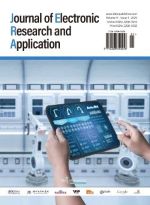Research on the Intelligent Evaluation of University Bursary Based on Blockchain
Abstract
Aiming at the problems of easy falsification of information and inaccurate evaluation results in the existing university bursary evaluation, a bursary evaluation model (XGBoost Model based on Blockchain, XMB) combining machine learning and blockchain was designed. The relevant basic data of the bursary evaluation is stored on the chain to solve the problem of easy falsification of data in the evaluation process. At the same time, the evaluation results of the student bursary are uploaded to the chain to realize the traceability of historical data. In addition, the improved XGBoost algorithm is used to intelligently analyze and evaluate the basic data of students, and objectively give the student a bursary grade, which realizes the intelligence and scientific nature of the evaluation process and ensures the accuracy of the evaluation results. The experimental results prove that the model proposed in this paper has an accuracy rate of about 6% higher than that of the traditional XGBoost model, which has higher evaluation accuracy, throughput, and time efficiency. The method proposed in this paper is suitable for the evaluation of scholarships and bursaries in the student management system of colleges and universities.
References
Lu GM, Zhang Y, Zhou ZM, 2019, Research on Classification and Prediction of Poor Students Based on Machine Learning. Computer Applications and Software, 36(1): 316–319.
Li MJ, 2017, Research on the Identification Method of Poverty Grants Based on Data Mining, Master’s thesis, Central China Normal University.
Ding ML, Pang ST, Shang GY et al., 2020, A Blockchain-Based Method, Equipment and Medium for Evaluation and Scholarship Management, Innovation: CN111310200A.
Yan XY, 2020, A Financial Aid Management Method and System Based on Blockchain Technology, Innovation: CN111797162A.
Chen TQ, Guestrin C, 2016, XGBoost: A Scalable Tree Boosting System, Proceedings of the 22nd ACM SIGKDD International Conference on Knowledge Discovery and Data Mining, 785–794.
Torlay L, Perrone-Bertolotti M, Thomas E, et al., 2017, Machine Learning-XGBoost Analysis of Language Networks to Classify Patients with Epilepsy. Brain Informatics, 4(3): 159–169.
Androulaki E, Barger A, Bortnikov V, et al., 2018, Hyperledger Fabric: A Distributed Operating System for Permissioned Blockchains, Proceedings of the 13th EuroSys Conference, 1–15.
Bao GB, Yu CJ, Zhao H, 2013, Researching on the Placement of Data Replicas in the System of HDFS Cloud Storage Cluster, China Intelligent Automation Conference Proceedings 255, 259–269.
Zhou JD, Yang Y, Zhang MJ, et al., 2016, Constructing ECOC Based on Confusion Matrix for Multiclass Learning Problems. Science China Information Sciences, 59(1): 135–148.
Wu XY, Wang SH, Zhang YD, 2017, Summary of the Theory and Application of K-Nearest Neighbor Algorithm. Computer Engineering and Applications, 53(21): 1–7.
Liu Y, Yu FR, Li X, 2020, Blockchain and Machine Learning for Communications and Networking Systems. IEEE Communications Surveys & Tutorials, 22(2): 1392–1431.

